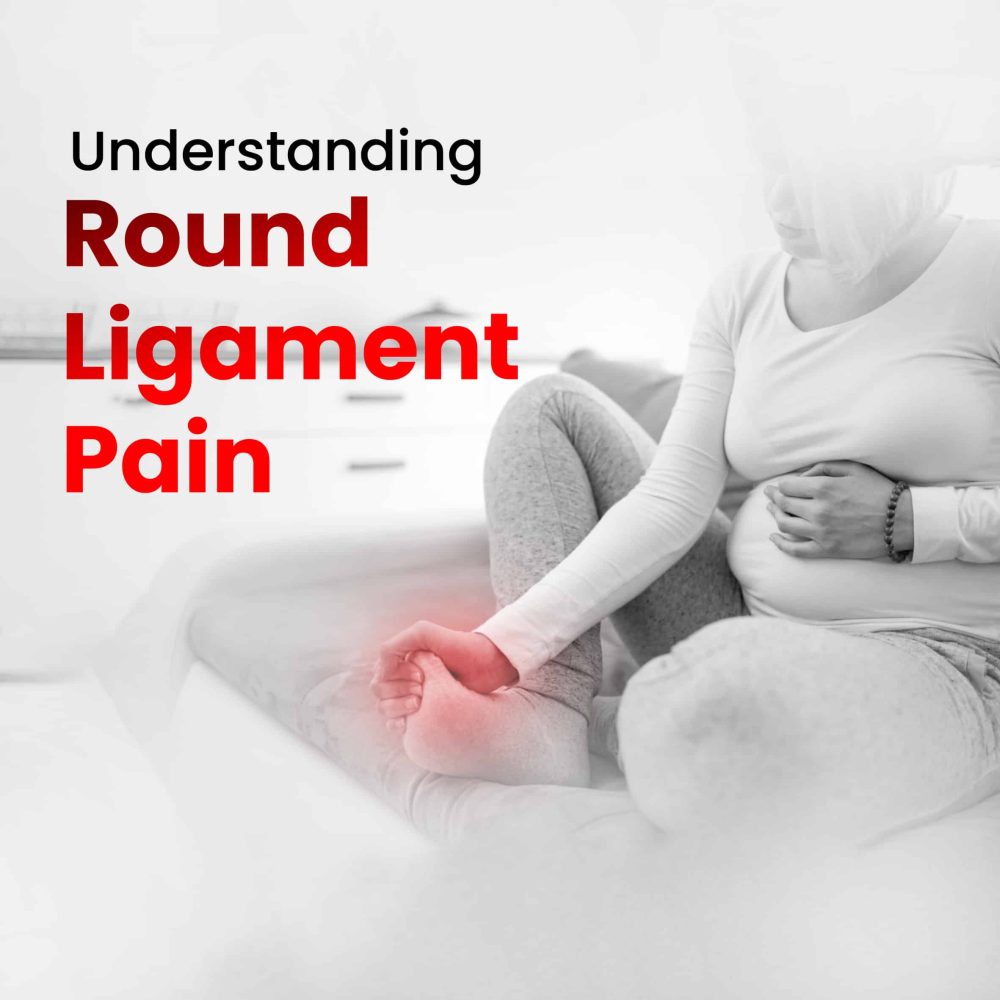
What is round ligament?
The round ligament, often referred to as the “round ligament of the uterus,” is a vital structure within the female reproductive system that plays a critical role in supporting the uterus. There are two round ligaments in the female pelvis, one on each side. These ligaments are part of the broader complex known as the “broad ligament,” which serves to connect various reproductive organs, including the uterus, fallopian tubes, and ovaries, to the sidewalls of the pelvic cavity.
Each round ligament extends from the upper regions of the uterus, specifically the uterine horns where the fallopian tubes are attached. From this origin point, they gracefully traverse through the pelvic cavity before attaching themselves to the labia majora, which are the prominent outer folds of skin surrounding the vaginal opening.
These round ligaments act as a supportive framework, ensuring the uterus maintains its proper position and stability within the pelvis throughout a woman’s reproductive life.
What is round ligament pain?
Uterus and round ligament pain are frequent occurrences during pregnancy. While they may be worrisome for some expectant mothers, they are usually considered normal and are part of the body’s natural adaptation to the changes that take place during pregnancy.
Uterine pain during pregnancy is commonly characterized as a mild, dull, or achy sensation in the lower abdomen or pelvis. It often resembles the type of discomfort experienced during menstrual cramps. This discomfort arises due to the various transformations happening within the uterus as it prepares to nurture and support the developing fetus. These changes may lead to stretching of the uterine muscles, which can manifest as pain or cramps.
How does pain feels?
Round ligament pain is typically described as a sharp, stabbing, or shooting pain on one or both sides of the lower abdomen. It often occurs when changing positions or during sudden movements.
Symptoms of Round Ligament Pain:
Sharp Pain: The main symptom of round ligament pain is a sudden, sharp, or shooting pain in the lower abdomen. It often happens on one or both sides of the pelvis.
Quick Onset: This pain comes on suddenly and is often triggered by rapid movements or position changes. Everyday actions like getting up quickly, turning in bed, coughing, sneezing, or even laughing can bring it on.
Location: The pain is typically felt low in the belly, near the groin area. It feels like a deep ache or pulling sensation.
On-and-Off: Round ligament pain tends to come and go. It might last for a few seconds or minutes and then ease off.
Causes of Round Ligament Pain:
Uterine Growth: The primary cause of round ligament pain during pregnancy is the growth and expansion of the uterus. As the fetus grows, the uterus becomes larger and heavier, putting increased stress on the round ligaments.
Hormonal Changes: Pregnancy hormones, particularly relaxin, play a role in relaxing and softening the ligaments and muscles in the pelvis and abdomen. This increased laxity can contribute to the sensation of stretching and pulling.
Sudden Movements: The rapid stretching or sudden movements of the round ligaments can stimulate nerve endings in the ligaments, leading to pain sensations. Activities that involve sudden changes in position or movement, as mentioned earlier, can trigger the pain.
Position of the Uterus: The position of the uterus can also influence the likelihood of experiencing round ligament pain. If the uterus is tilted or positioned in a certain way, it may put more stress on the round ligaments.
Individual Variation: Some individuals may be more prone to round ligament pain than others, possibly due to variations in anatomy or sensitivity to the stretching of the ligaments.
How to prevent round ligament pain?
Preventing round ligament pain during pregnancy is challenging because it is primarily a result of the natural changes occurring in your body as your uterus grows and expands.
Stay Active and Fit: Engaging in regular, low-impact exercises can help maintain strength and flexibility in your abdominal muscles and ligaments. Like, prenatal yoga, gentle stretching, and swimming are excellent options.
Maintain Good Posture: Proper posture can reduce strain on your ligaments and muscles. When sitting or standing, make an effort to keep your back straight and shoulders aligned.
Move Carefully: Be mindful of sudden movements or changes in position. When getting out of bed or up from a chair, do so slowly and gradually. Avoid sudden twists or turns.
Supportive Clothing: Wearing supportive maternity belts or bands can provide some relief by helping to distribute the weight of your growing uterus more evenly.
Pillow Support: Use pillows to support your body while sleeping. Placing a pillow between your legs or under your belly can help reduce the strain on your round ligaments.
Warm Compress: Applying a warm compress to the area where you experience round ligament pain may help relax the muscles and ligaments, providing temporary relief.
Stay Hydrated: Proper hydration can help reduce muscle cramps and contractions, which can contribute to discomfort.
Avoid Constipation: Constipation can lead to straining during bowel movements, which may exacerbate round ligament pain. Consume a high-fiber diet and stay hydrated to prevent constipation.
Practice Gentle Stretching: Gentle stretching exercises, particularly those that target the lower abdominal and pelvic area, can help maintain flexibility and reduce tension in the ligaments.
Consult Your Healthcare Provider:
If you experience severe or persistent round ligament pain, or if you have any concerns, it’s essential to discuss your symptoms with your healthcare provider. They can provide personalized guidance and rule out any other potential causes of pain.
Treatments
•Elastic belly band to support your baby bump.
•Rest.